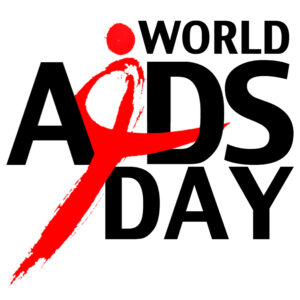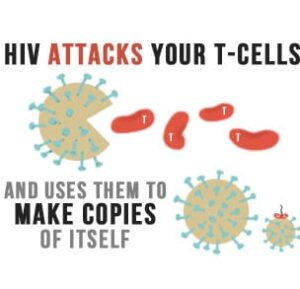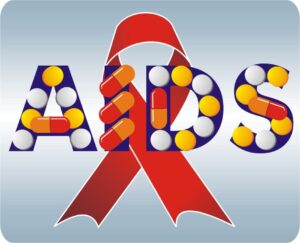Introduction

Today is World AIDS day. This isn’t 1983. The mystery of how HIV infection is contracted has come and gone. Be knowledgable to be empowered. This is the first blog in an ongoing series on HIV and AIDS.
- For an explanation of what AIDS is, click here.
- For an explanation of the signs and symptoms of HIV/AIDS is, click here.
How HIV Lives
First, let’s address a simple principle. The HIV virus can live and reproduce in high levels in blood other body fluids, including breast milk, rectal mucus, semen (and pre-semen) and vaginal fluids. If any of those fluids are infected and are transmitted to another’s body, that individual can become infected with HIV. In special circumstances (such as healthcare workers), individuals may become exposed to other areas that may contain high levels of HIV, including amniotic fluid (in pregnancy women), cerebrospinal fluid (from the brain and spinal cord) and synovial fluid (from various joints).

Now please take a moment and look at the above picture. In addition to those circumstances listed, you should know that fluids such as feces, nasal fluid, saliva, sweat, tears, urine or vomit don’t by themselves contain high enough levels to transmit HIV. However, if those fluids are mixed with blood, and you have contact with both fluids, you may become infected via these routes.
HIV Transmission
HIV is transmitted through body fluids in very specific ways:
- During anal, oral or vaginal sex: When you have anal, oral, or vaginal sex with a partner, you will have contact with your partner’s body fluids in areas very likely to be high in HIV viral load if your partner is infected. HIV gets transmitted in these instances through small breaks in the surfaces of the mouth, penis, rectum, vagina or vulva. One of the reasons HIV infection rates are higher in individuals with herpes and syphilis is because those diseases cause open sores, creating additional opportunities for HIV-infected body fluids to enter the body.
- During pregnancy, childbirth or breastfeeding: Babies have constant contact with their mother’s potentially infected body fluids. Means of transmitting HIV from mother to child include through amniotic fluid, blood and infected breast milk.
- As a result of injection drug use: Injecting drugs puts you in contact with blood. If those needles and their contents are contaminated, you can be directly delivering HIV into your bloodstream.
- As a result of occupational exposure: Healthcare workers must be constantly diligent against this method of transmission. Risks of HIV transmission to healthcare workers occur through blood transferred from needlesticks and cuts, and less commonly through contact of infected body fluids splashed into the eyes, mouth or into an open sore or cut.
- As a result of a blood transfusion or organ transplant: Fortunately, these days, this is very rare given the stringency of screening requirements in the United States. Still, it is possible to transmit HIV through blood transfusions or organ transplants from infected donors.
How To Avoid AIDS
How does one get AIDS?
AIDS is a progression of HIV into its later stages. It occurs after one’s immune system is severely damaged. You don’t “get AIDS” as much as HIV progresses to AIDS in certain circumstances. Many of us recall that HIV could progress in this way to AIDS in a matter of a few years a few decades ago. Fortunately, with the development of specialized medications in the 1990s, people with HIV are living much longer with HIV before they develop AIDS.
Follow us!
Ask your SMA expert consultant any questions you may have on this topic. Also, take the #72HoursChallenge, and join the community. Additionally, as a thank you, we’re offering you a complimentary 30-day membership at www.72hourslife.com. Just use the code #NoChaser, and yes, it’s ok if you share!
Order your copy of Dr. Sterling’s books There are 72 Hours in a Day: Using Efficiency to Better Enjoy Every Part of Your Life and The 72 Hours in a Day Workbook: The Journey to The 72 Hours Life in 72 Days at Amazon or at www.jeffreysterlingbooks.com. Another free benefit to our readers is introductory pricing with multiple orders and bundles!
Thanks for liking and following Straight, No Chaser! This public service provides a sample of http://www.SterlingMedicalAdvice.com (SMA) and 844-SMA-TALK. Likewise, please share our page with your friends on WordPress! Also like us on Facebook @ SterlingMedicalAdvice.com! Follow us on Twitter at @asksterlingmd.
Copyright © 2018 · Sterling Initiatives, LLC · Powered by WordPress













